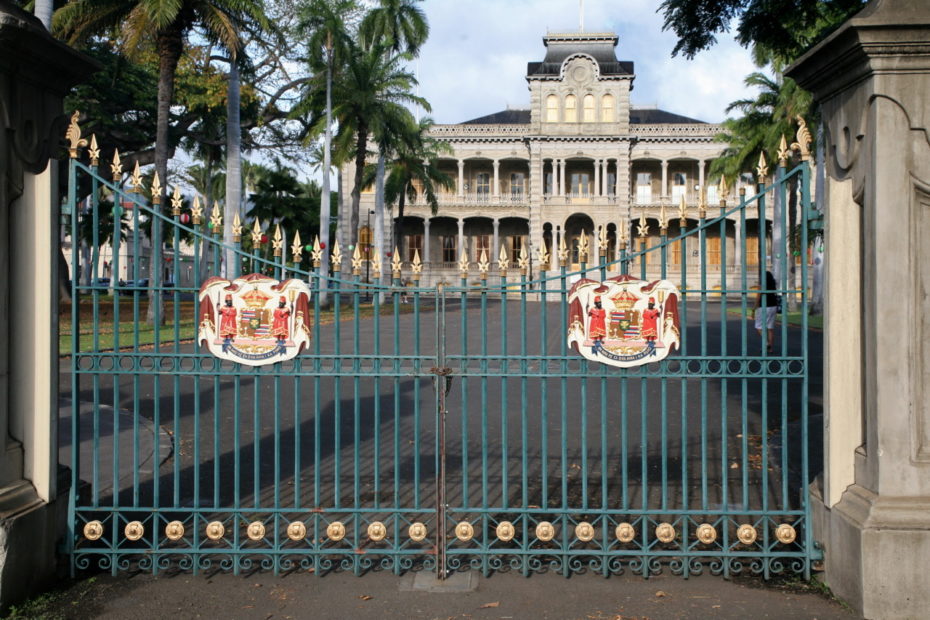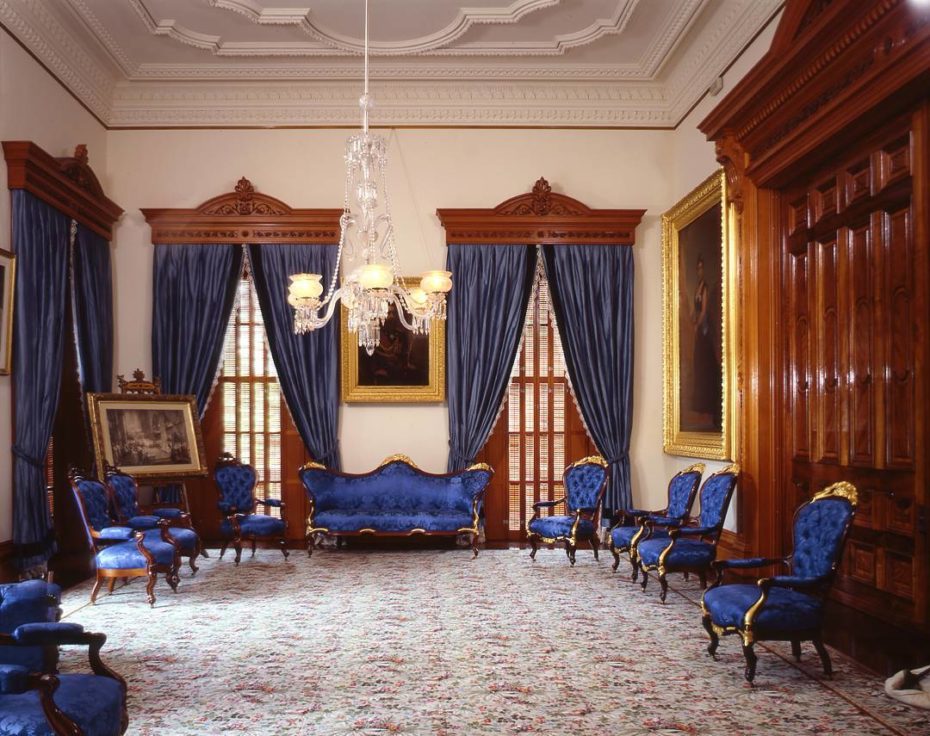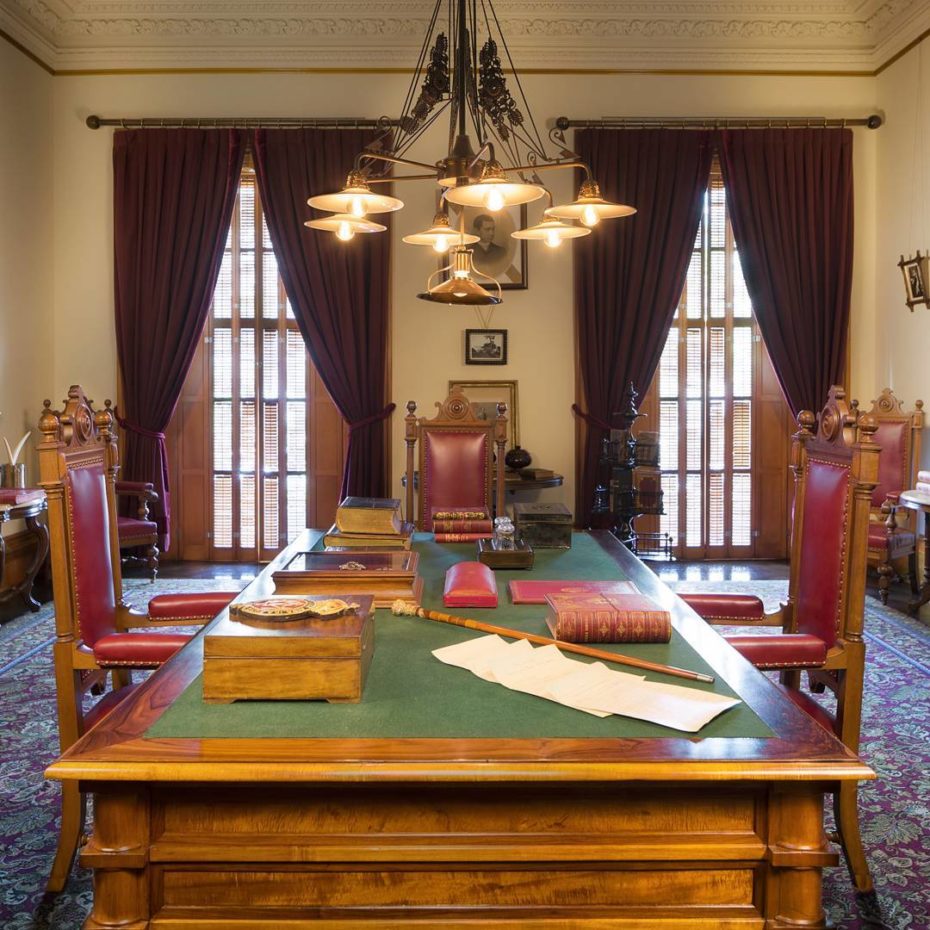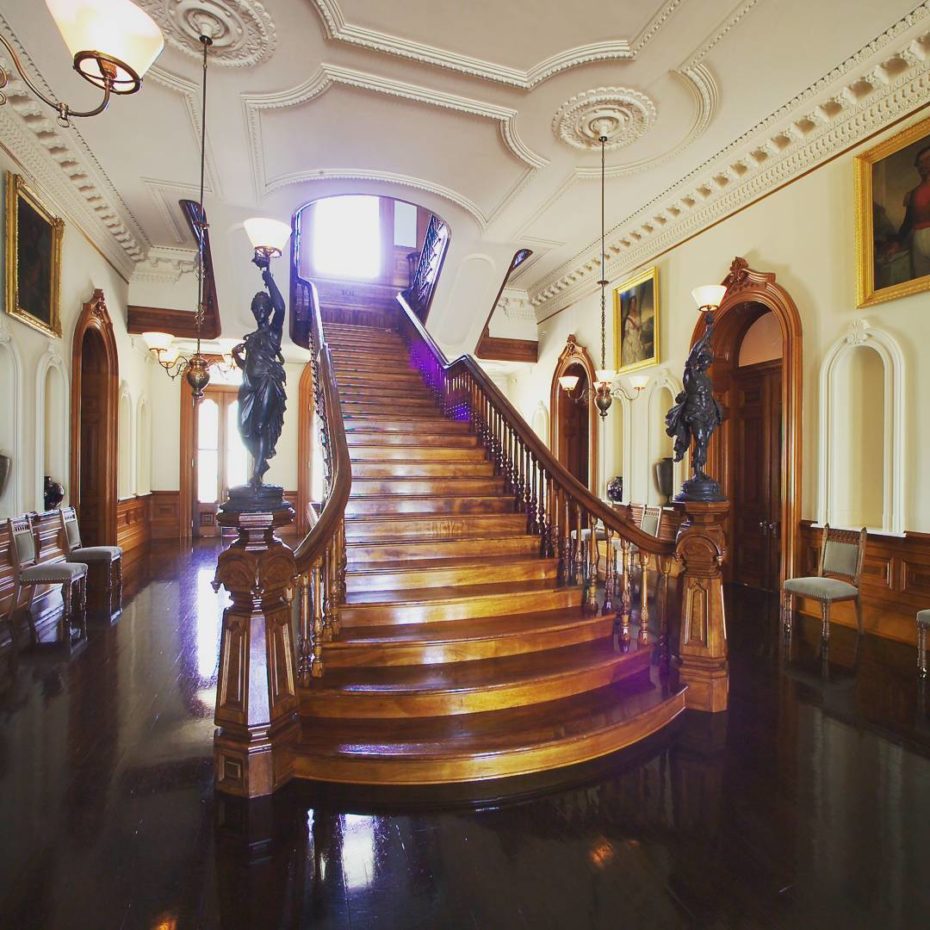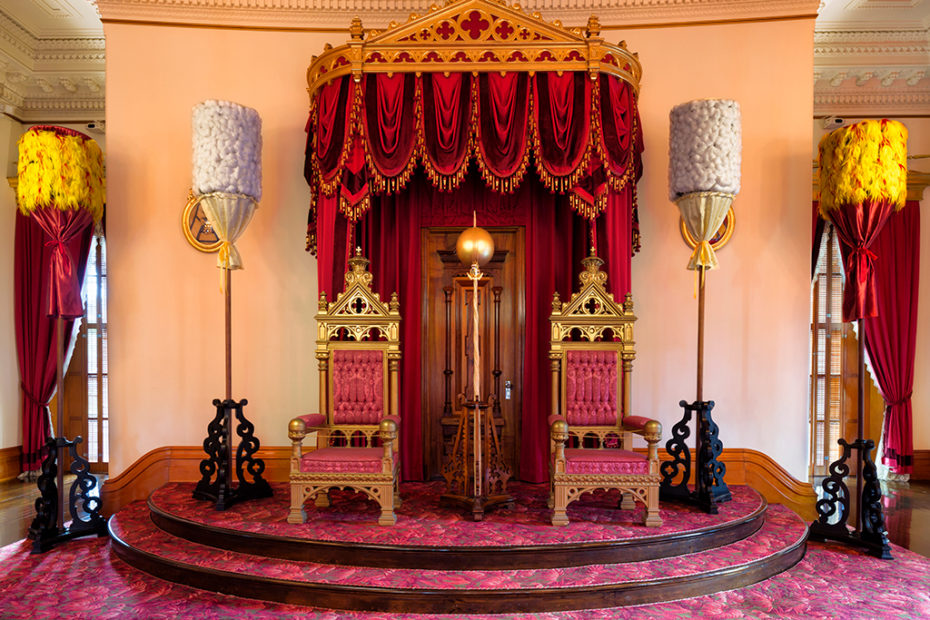
Iolani Palace
At a glance, it could be a corner at Buckingham Palace, but what you’re looking at is the gilded throne room of America’s only royal residency on U.S. soil. This is the Iolani Palace in Honolulu, Hawaii, built in 1879 for the last sovereign monarchs of Hawaii. Not many people know there’s an American princess in waiting, making the unclaimed palace even more mysterious in its unavoidable emptiness…

Iolani Palace, the Grand Hall
Depending on who you ask about that plushy red throne, you may get a few different answers as to who should be sitting in it. And is it really American? Some would argue it’s not even on American soil.
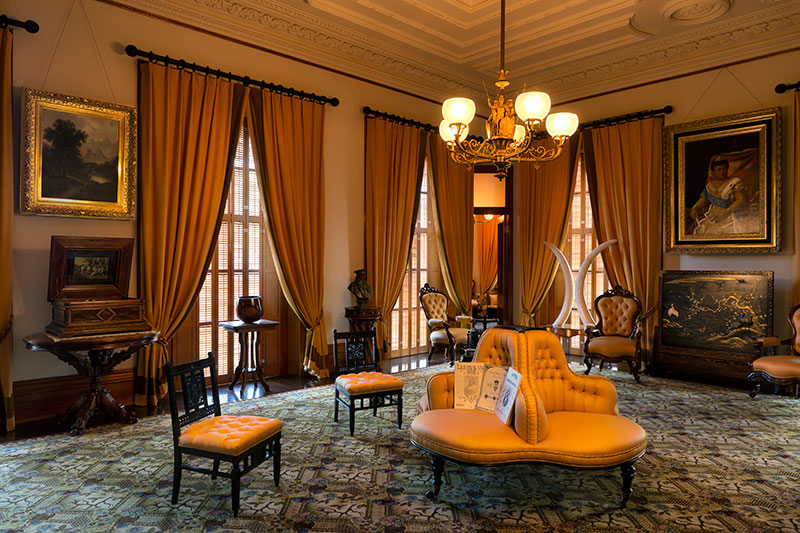
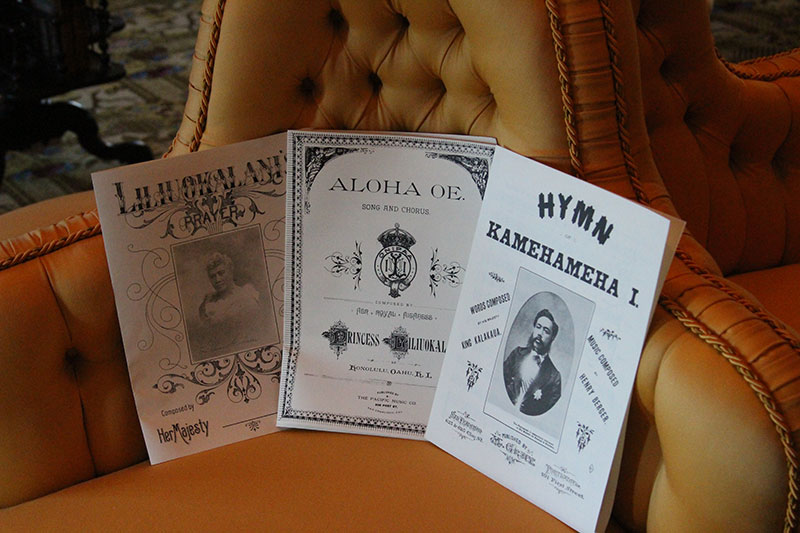
Most history classes brush over the story of how Hawaii became the 50th state (at least, the ones we attended) and fail to mention not only the grandeur of Queen Liliuokalani’s palace and reign, but her fight to save the once flourishing Hawaiian Kingdom that the US forcibly annexed. In other words, it would appear that Elvis’ favourite state was, and still is, under illegal U.S. occupation— and that lavish throne room is where the Queen faced an unjust trial, and was consequentially imprisoned.
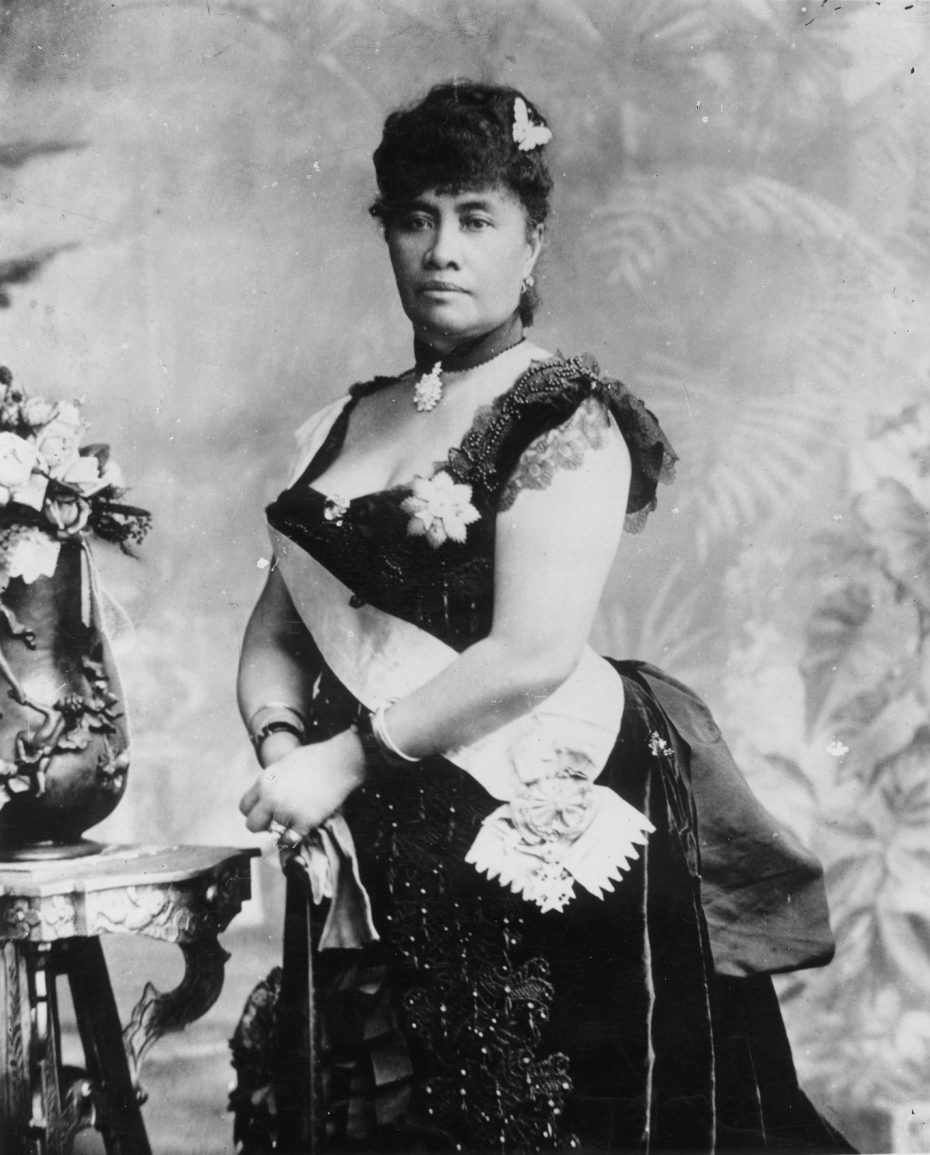
Liliʻuokalani, first queen regnant and the last sovereign monarch of the Kingdom of Hawaiʻi
The Kingdom of Hawaii had originated in 1795 and was recognised by the major European monarchies while the United States became its chief trading partner. When the Hawaiian Royal Family was warmly welcomed by Queen Victoria for the Golden Jubilee and sat alongside other foreign royal guests at Westminster Abbey, it only fuelled US suspicion and jealousy that some other power might seize control of the territory. The family was eventually betrayed by the kingdom’s own elite. leading to the monarchy’s loss of absolute power before Queen Liliʻuokalani was finally overthrown in 1893. Her army did not rally to her defence, and within a year, Hawaii was annexed by the United States to become the Territory of Hawaii.
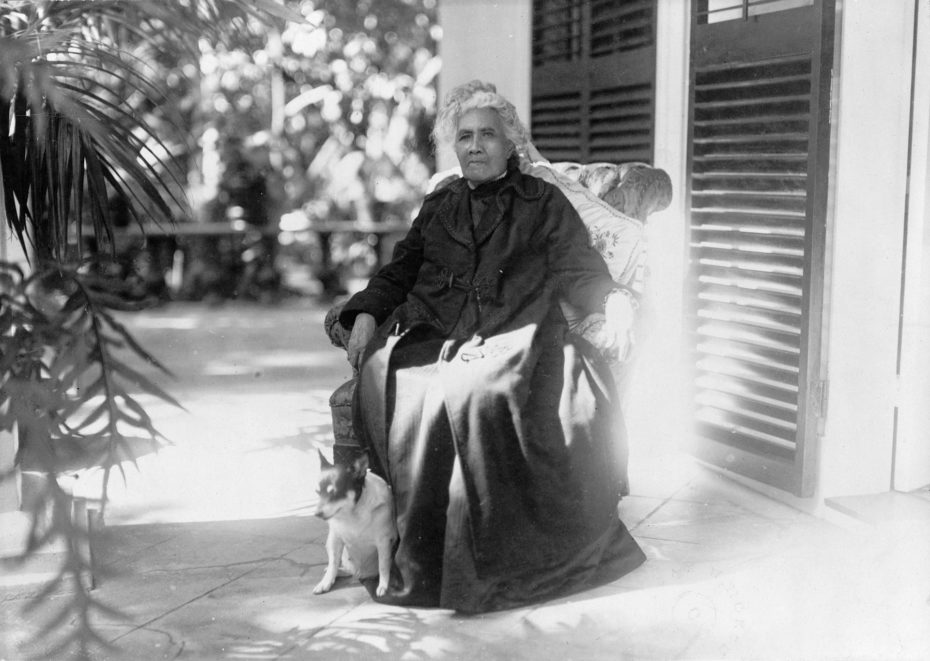
During her imprisonment, Liliʻuokalani abdicated her throne in return for the release and pardon of her jailed supporters who had been sentenced to death following a rebellion to restore the Queen and her monarchy.
For myself, I would have chosen death rather than to have signed it; but it was represented to me that by my signing this paper all the persons who had been arrested, all my people now in trouble by reason of their love and loyalty towards me, would be immediately released. Think of my position, — sick, a lone woman in prison, scarcely knowing who was my friend, or who listened to my words only to betray me, without legal advice or friendly counsel, and the stream of blood ready to flow unless it was stayed by my pen.
— Queen Liliʻuokalani, Hawaii’s Story By Hawaii’s Queen
Liliʻuokalani was eventually pardoned and allowed to live out the rest of her days at her home, Washington Place in Honolulu. After a decade of legal pursuits seeking the return of the seized Hawaiian Crown Lands, she was finally granted a lifetime pension of $1,250 a month.
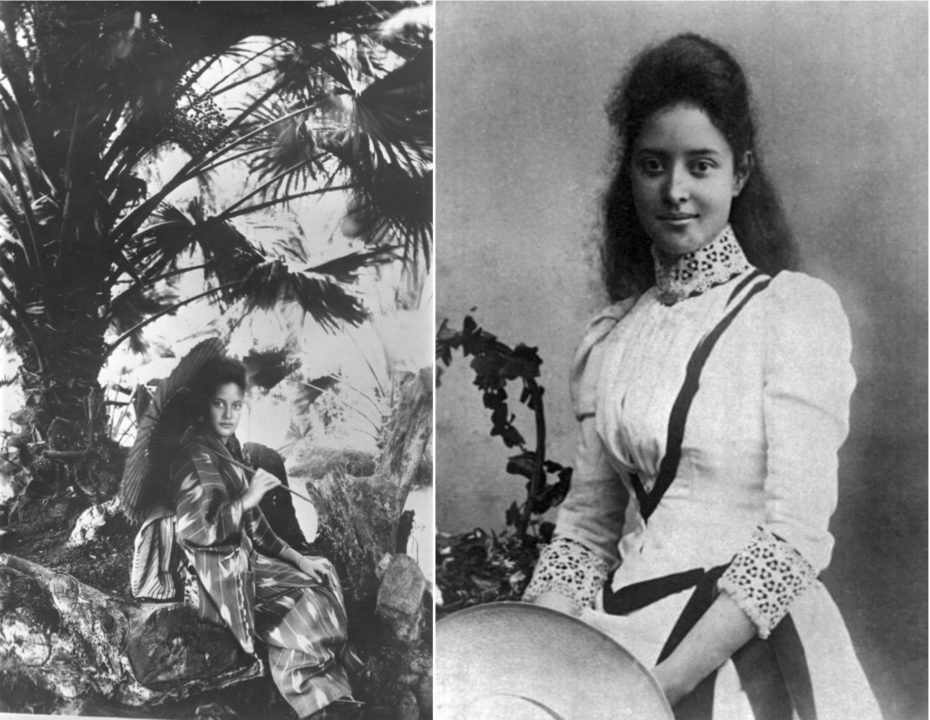
Enter Princess Kaiulani, niece of the the last sovereign monarch of Hawaii, who became known throughout the world for her intelligence and determination to fight injustice towards her people after the overthrow of the monarchy. She made many speeches and public appearances to denounce it.
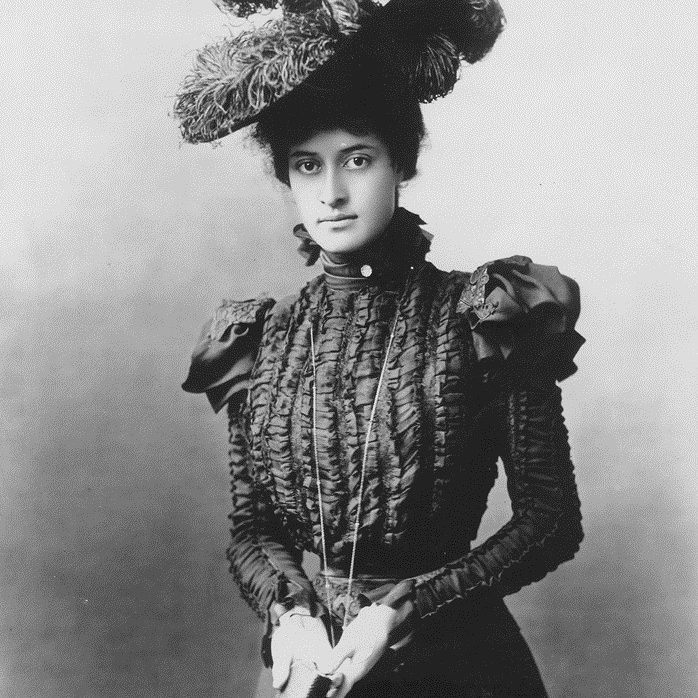
The Princess
“Four years ago, at the request Mr. Thurston, a Hawaiian Cabinet Minister, I was sent away to England to be educated privately,” writes her relative Princess Kaiulani in a 1893 letter,“and fitted to the position which by the constitution of Hawaii I was to inherit. For all these years, I have patiently and in exile striven to fit myself for my return this year to my native country. I am now told that Mr. Thurston will be in Washington asking you to take away my flag and my throne. No one tells me even this officially. Have I done anything wrong that this wrong should ‘be done to me and my people? I am coming to Washington to plead for my throne, my nation and my flag. Will not the great American people hear me?”

prince jonah kuhio kalanianaole
Take a gander at her cousin, Prince Jonah Kuhio Kalanianaole (pictured above), who was not only a solid moustache man but a wonderful surfer. And here are a few snapshots of the kingdom she’d been waiting all her life to rule, from memories of coronation days (and presents) to lounging around with family:
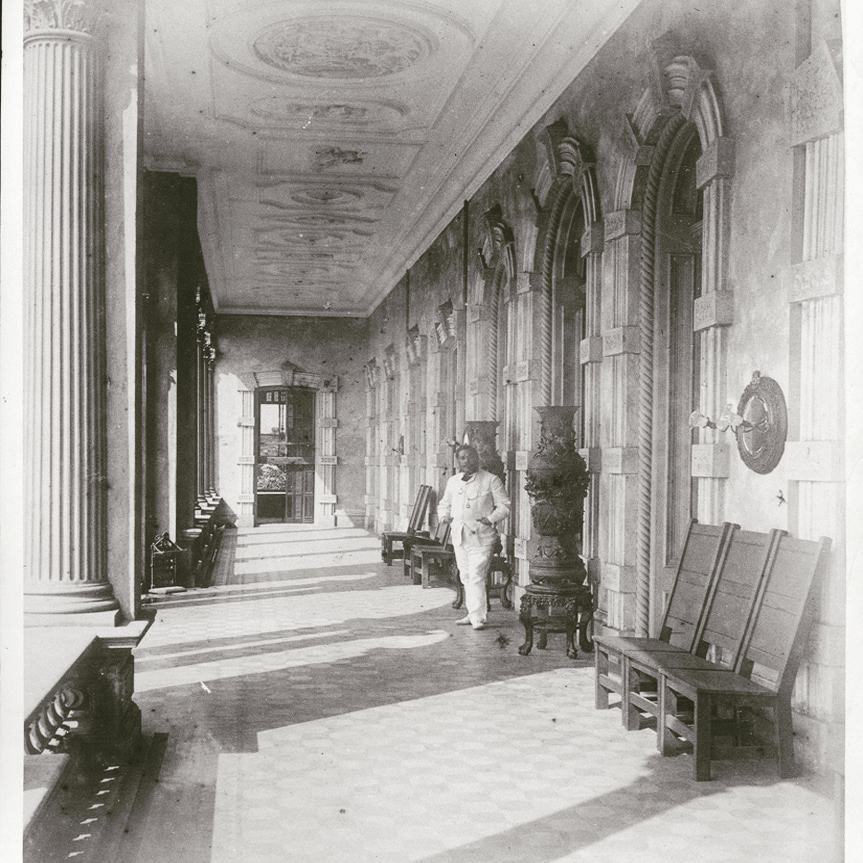
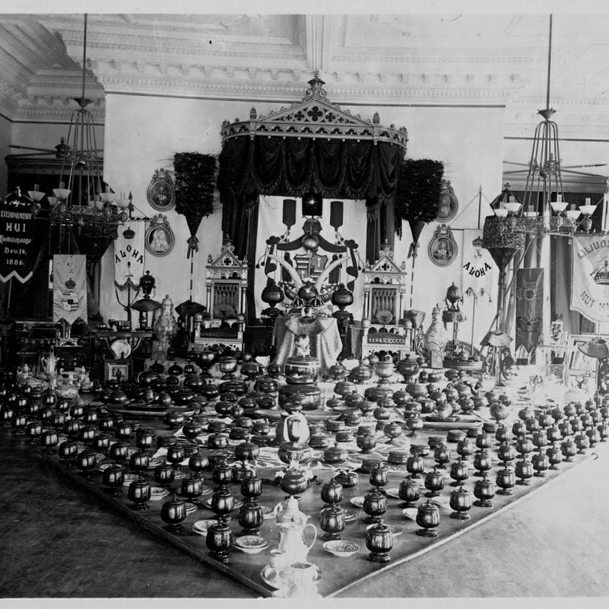
Coronation gifts
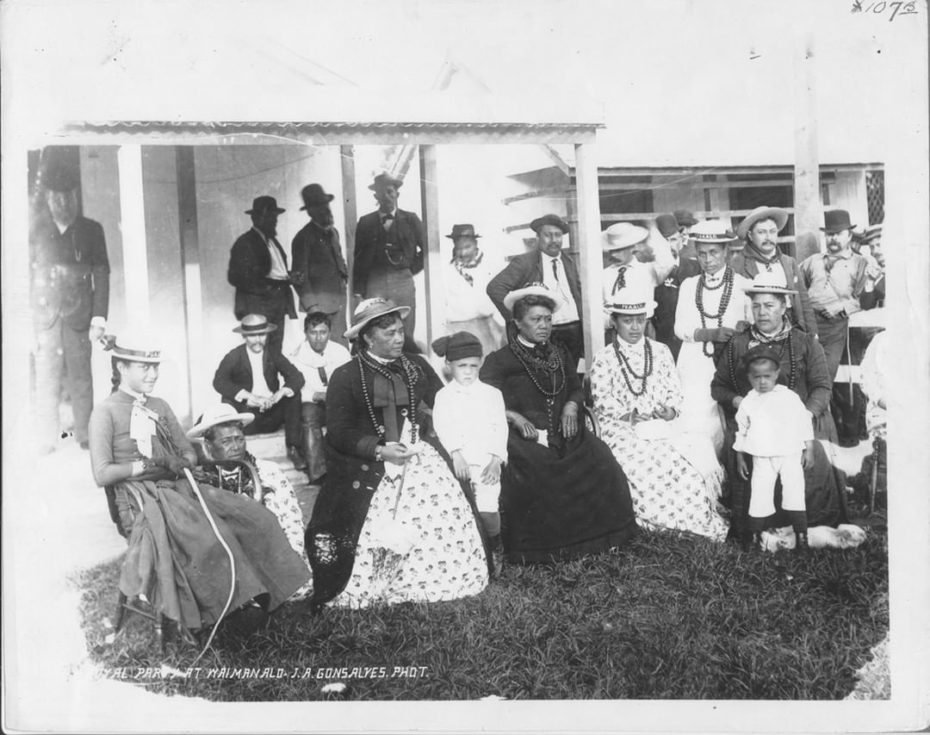
The Palace was a bit of cultural hotspot back then. Queen Liliuokalani hosted numerous fancy dress balls and even dined with Robert Louis Stevenson, the author of Treasure Island, and his family:
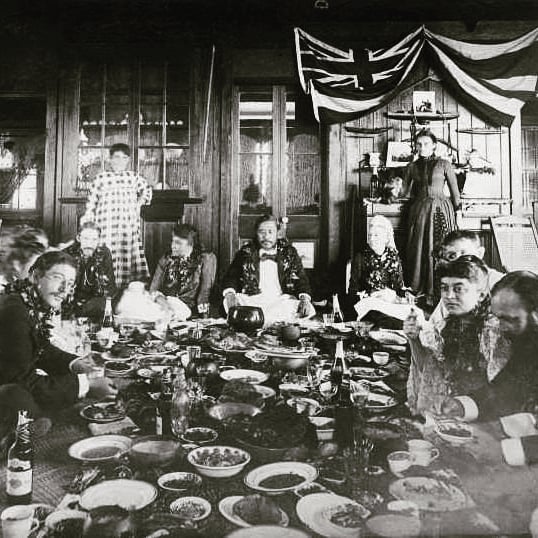
But sure enough, in 1893 armed US naval forces emerged, in cahoots with the American sugar plantation owners, to take control the Princess’ future kingdom. The easiest way? To simply eradicate it; the King was given the option of dismissing his cabinet ministers, or being killed. Hence the name for the new constitution: the Bayonet Constitution. The new laws also, reported The New York Times in 2013, “extended voting rights to wealthy non-citizens, while excluding Asians and restricting access for native Hawaiians…” Here’s shot of the militia disarming the Queen’s guards:
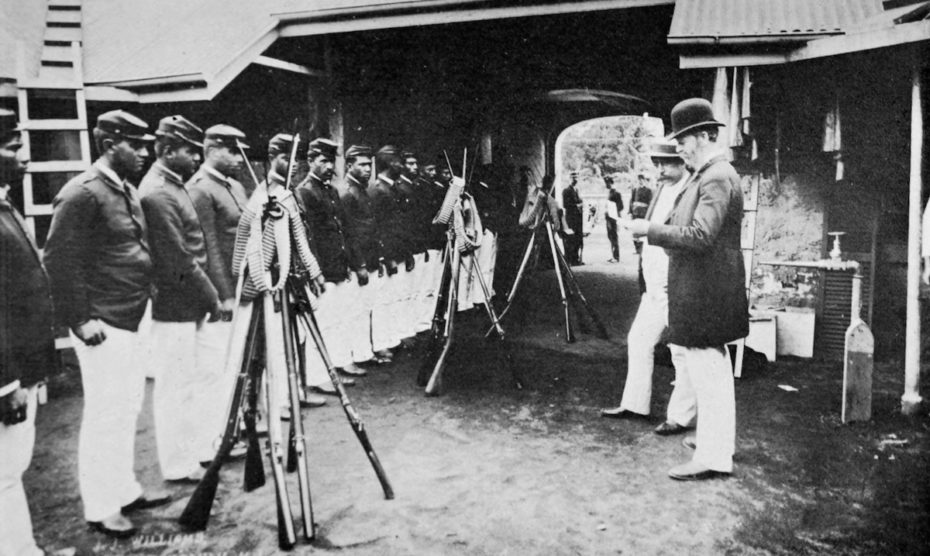
The U.S. disarms the Queen’s guards.
“It’s like genocide in paradise,” explained native Hawaiian Bumpy Kanahele to the media in 2017, when asked about the legacy of the “transition” from being sovereign, to enslaved. Over the past 50 or so years, he’s developed a village called “Waimanalo” as a model for a free Hawaii. It’s pretty off the grid, with about 80 ‘citizens’ living off 200 amp boxes in a tight-nit community space. But he recalls the days when the Kingdom of Hawaii belonged to his people, stressing that education of what really happened all those years ago — that it wasn’t just a lax hand-off — is crucial.
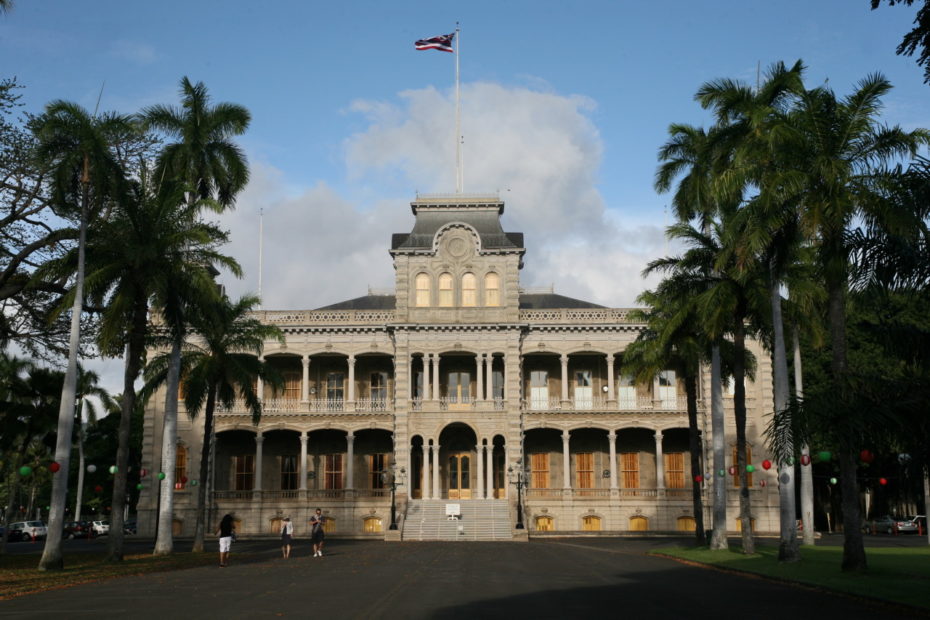
Okay, still trying to wrap your head around the idea that the Hawaii may not legally be a part of the United States? Williamson Chang, a professor of law at University of Hawaii, broke it all down for BBC journalist Taylor Kate Brown for BBC in 2015. “He argues under international law,” she reported, “one country can only annex another by treaty – a document which both parties sign. This is how the entire rest of the US was formed – the Louisiana Purchase, the treaties with Native American tribes, the addition of the Republic of Texas. Anything else – including what happened in Hawaii – is an occupation.”
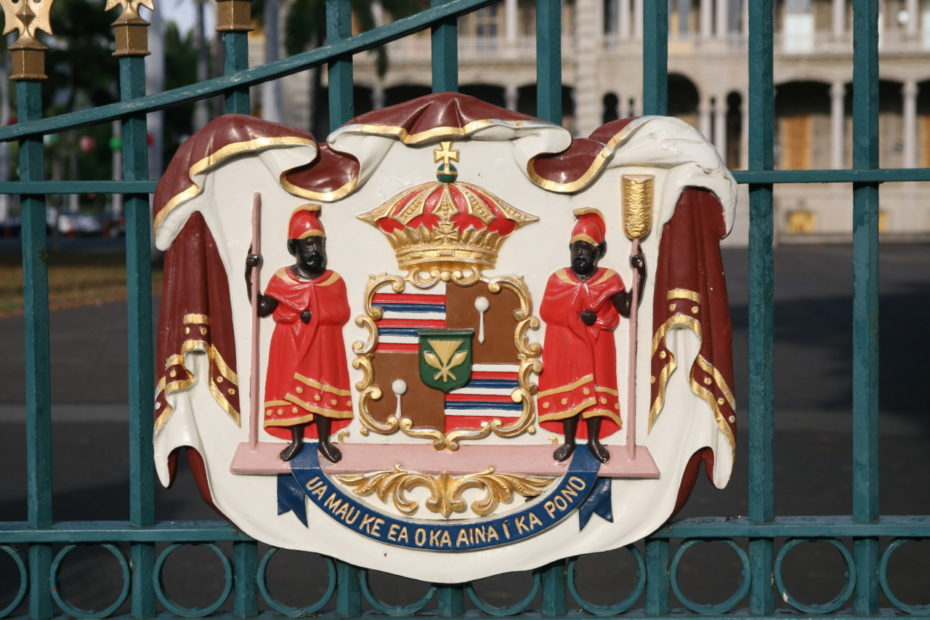
Cliff
It wasn’t until the 1970s that the palace was restored, and it wasn’t until 1993 that President Bill Clinton issued a “formal apology” to the people of Hawaii for, well, everything. It was a gesture in the right direction, but one that leaves a lot of work to be done.
Multimillionaire heiress Abigail Kinoiki Kekaulike Kawananakoa, considered by many to be Hawaii’s last princess, has paid the palace’s electric bills for the past six years. The Iolani Palace was built by her great uncle. She is the granddaughter of the late Prince David Kawananakoa, who was in the line of succession to the throne around the time of the kingdom’s overthrow. Born and raised in Honolulu, Abigail became an expert horsewoman but kept herself out of the spotlight while remaining active in various causes for the preservation of native Hawaiian culture.

Hawaii’s other princess-in-waiting, Owana Ka’ohelelani Salazar, has long disputed the royal claims of Abigail Kawananakoa, in favour of her own line through a different house of descendants, explained in her website’s family tree. In 2017, Salazar reestablished the Royal Order of the Crown of Hawaii in a protocol exchange with the Duke of Braganza, Head of the Royal Family of Portugal, and other members of royal families and African nobility. The event was the first exchange of royal honours between foreign royalty and the Hawaiian Kingdom since the overthrow 124 years ago.
Both women are current pretenders to the crown, without any official title or real power in the state, but Salazar, 65, seems to have the one up on Princess Abigail, staking her claim to the throne with an official “Royal Family of Hawaii” website.
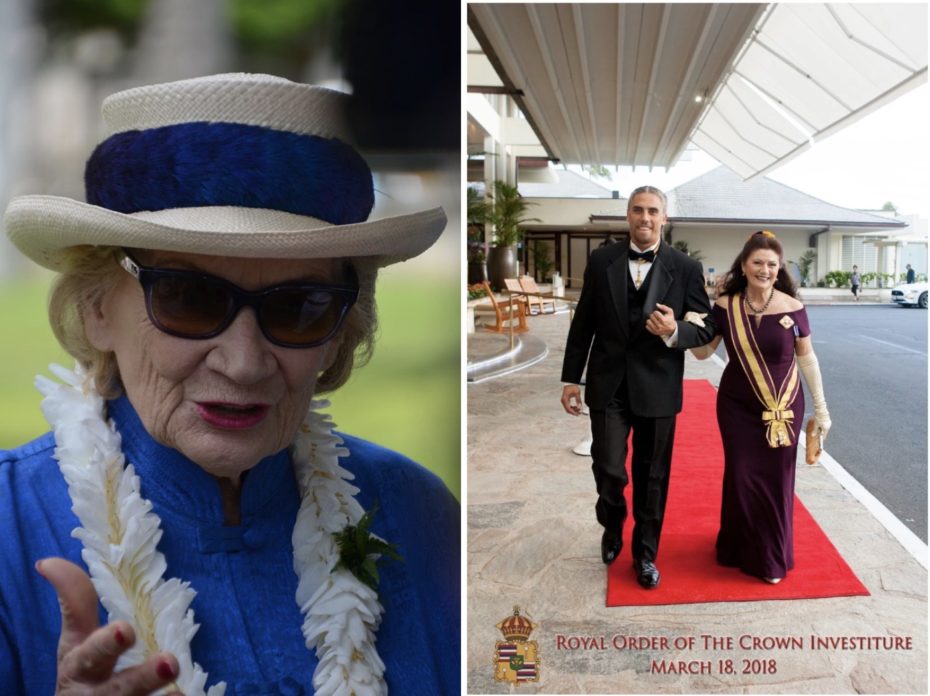
Left: Abigail Kawananakoa; Right: Owana Ka’ohelelani Salazar
Abigail, who goes by “Kekau” is currently 91 years-old and just wed her longtime partner, Veronica Worth, but is now in the midst of an ongoing legal dispute over her $215 million fortune. Kekau’s former attorney has alleged that Worth is financially exploiting the heiress in her old age. It’s suspected that charitable assets Abigail intended to earmark for native Hawaiians are being squandered by her younger partner.
In the meantime, the palace stands prim and polished as ever, open for your viewing pleasure — but missing its King and Queen– or shall we say Queen and Queen?
Learn more about visiting the palace here.


